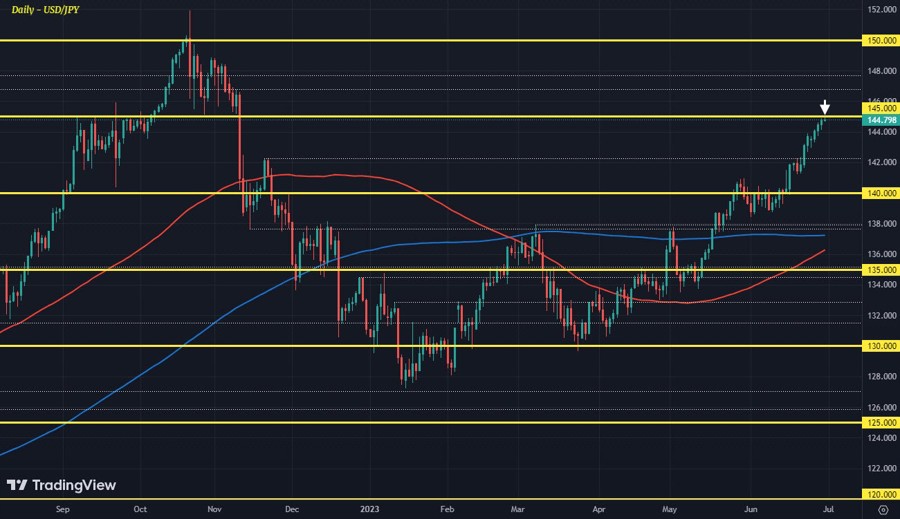That set it on the path from the break of 140.00 to having touch a high of 145.07 earlier today. The 145.00 mark is where we can start to gauge intervention territory by Japanese officials, something which was pointed out here earlier this month. There has already been plenty of verbal warnings but that is part of the typical playbook by Japanese officials, as is the case in the past.
For now, traders seem a bit guarded in testing waters above the key level. But unless Japan delivers more frequent and sterner warnings, the bulls might look to keep testing their limits.
It’s not so much about a case that they are purposefully trying to challenge Japanese officials. But with the Fed still opening the door to tighten further and the BOJ not even close to hinting at a change in policy, that divergence is carrying the pair higher.
There’s also the context that yen bulls have grown increasingly frustrated at the indifference between Ueda’s start and Kuroda’s tenure previously. The March rally in the yen was largely sparked amid a positive and strong wage developments from the shunto negotiations. Since then, the hawkish rhetoric has died down and that is dragging the yen lower alongside it.
And with the dollar also keeping firm amid strong US data and higher yields still, there is strong conviction to maintain the recent momentum. The only issue now is if and where Japan will draw the line and step in.
In October last year, the 150.00 mark was that breaking point. But given a somewhat similar one-sided rally from 130.00 to 145.00 in the past three months, they might not wait too long to find things out this time.
